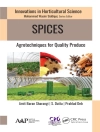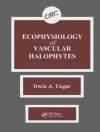This book describes general glycobiology in emphasizing the structures, biosynthesis, glycosylation and distribution of the glycans and xenogenic glycoantigens in eukaryotic cells of mammals including mouse, swine, chimpanzee and human. In the middle, I have focused on topics in xenotransplantation glycobiology and expand descriptions of allogenic and xenoantigenic transplantation to open the dawn in insights into the origin of life. One of the biological diversity, named species diversity, is a phenomenon environmentally adapted from the evolutionary process for long period. The distinct structures of glycans discriminate each organism and are the essential molecular basis of the discrimination and difference between the organisms, giving an incompatibility between the different species. Diversity and variations in carbohydrate chain structures between family, species, kingdoms and domains mark the global pattern and signs of immune self- and non-self recognition. In human, diversity in ABH blood group antigens is observed in human family and this type pattern distinguishes individuals from a pan-family to non-dividable unit of the family. Blood transfusion and organ transplantation are impossible even in the allogenic cross between humans if carbohydrates are ignored. This explains how and how human beings are a lonely existence. ABH-related antibodies induce hemolysis or hyperacute or allograft rejection due to incompatible graft property even between the same species. The incompatibility is an immunologic rejection when the recipient host receives the tissues or organs from the different species of donors, as well-known in pig-to-human xenotransplantation. The immunologic incompatibility between the donor pigs and the recipient human are based on the evolutionary distance between pigs and humans. This distance allows a xenograft rejection between the 2 mammals. Modification or deletion of the specific gene locus for immune rejection on genome of donor animalsdisrupts the immunological recognition ligands of the donor organs, consequently preventing the immune rejection of the human recipient and xenograft rejection. This book helps undergraduate and graduate students, researcher and professors who are involved in the glycobiology and xenoantigenic biology with recent advances in the xenotransplantation basic and clinic.
Содержание
Preface.- Table of Contents.- Keywords.- Chapter 1 Origin of Life and Diversity of Glycan.- Chapter 2 Current State of Xenotransplantation.- Chapter 3 Pig as Best Source for Clinical Xenotransplantation.- Chapter 4 Glycan Antigens of Pig Interfering with Xenotransplantation: Three Immune Responses from the Glycans.- Chapter 5 Glycosylation in Eukaryotes.- Chapter 6 Human Red Blood Cell (RBC) Blood Groups System.- Chapter 7 Non-ABO Blood Group Systems.- Chapter 8 Conceptual Aspect of Xenotransplantation from ABO Blood Type-incompatible Organ Allotransplantation.- Chapter 9 Classification of Rejection in Host Recipients in Xenotransplantation.- Chapter 10 Hyper Acute Rejection (HAR).- Chapter 11 Non-α1, 3Gal Carbohydrate Antigenic Epitopes.- Chapter 12. Other non-a1, 3Gal Antigens.- Chapter 13 Blood Mediated Inflammatory Reaction (IBMIR) and Prevention of IBMIR.- Chapter 14 Protection of Cellular Antigens from Xenoreactive Responses as Overcoming Strategies.- Chapter 15 Delayed Rejection of Xenograft (DRX).- Chapter 16 Blood Coagulation as Coagulation Dysregulation.- Chapter 17 Xenogeneic and Allogenic Cellular Rejection (CR).- Chapter 18 Induction of Xenograft Tolerance and Chimerism as an Alternative Prevention of Xenograft Rejection.- Chapter 19 Genome Editing and Transgenes in Pigs.- Chapter 20 Solid Xenoorgan Xenotransplantation.- Chapter 21 Infectious Risk and Protection.- Chapter 22 Concept of Chimeric Organisms such as Human-non-human chimera (HNH-chimera).- Chapter 23 Intra-bone Bone Marrow Transplantation.- Chapter 24 The Future of Pig Organ and Cell Xenotransplantation.- Chapter 25 Conclusions.
Об авторе
Prof. Cheorl-Ho Kim
Molecular and Cellular Glycobiology Unit, Department of Biological Sciences, Sungkyunkwan University












